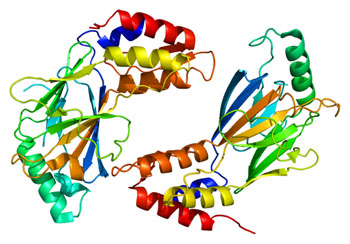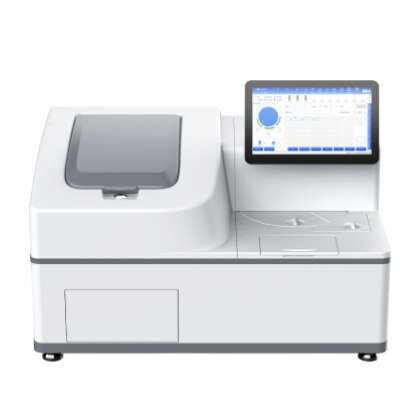Small Molecule Innate Immune System Stimulators Show Promise as Broad-Spectrum Antiviral Drugs
By LabMedica International staff writers
Posted on 29 Dec 2015
A family of low molecular weight compounds has been identified that activates the innate immune system to stimulate broad-spectrum protection against viral infections.Posted on 29 Dec 2015
The cellular response to virus infection is initiated when pathogen recognition receptors (PRR) engage viral pathogen associated molecular patterns (PAMPs). This process results in induction of downstream signaling pathways that activate the transcription factor IRF3 (interferon regulatory factor 3). IRF3 plays a critical role in antiviral immunity to drive the expression of innate immune response genes, including those encoding antiviral factors, type I interferon, and immune modulatory cytokines that act in concert to restrict virus replication.

Image: Structure of the transcription factor IRF3 (interferon regulatory factor 3) (Photo courtesy of Wikimedia Commons).
Investigators at the University of Washington (Seattle, USA) and their colleagues at the University of Texas Medical Branch (Galveston, USA), and the biotechnology company Kineta Inc. (Seattle, WA, USA) theorized that small molecule agonists that promoted IRF3 activation and induced innate immune gene expression could serve as antivirals to induce tissue-wide innate immunity for effective control of virus infection.
To this end they tested representative compounds and derivatives from a hydroxyquinoline family of small molecules for the ability to suppress infection by a broad range of RNA viruses. They reported in the December 16, 2015, online edition of the Journal of Virology that these molecules could prophylactically or therapeutically control infection in cell culture by pathogenic RNA viruses including West Nile virus, Dengue virus, Hepatitis C virus, influenza A virus, respiratory syncytial virus (RSV), Nipah virus, Lassa virus, and Ebolavirus.
"Our study shows that our compound has an antiviral effect against all these viruses," said senior author Dr. Michael Gale Jr., professor of immunology at the University of Washington.
Knockdown studies mapped this response to the RIG-I-like receptor pathway. RIG-I is a cellular protein known as pathogen recognition receptor. These receptors function to detect viral RNA and signal an innate immune response inside the cell that is essential for limiting and controlling viral infections. This signaling then induces the expression of many innate immune and antiviral genes and the production of antiviral gene products, pro-inflammatory cytokines, chemokines and interferons.
Contributing author Dr. Shawn Iadonato, CSO at Kineta, said, "There is tremendous interest in triggering innate immunity for a number of reasons. One is because some viral infections cannot be treated by traditional antivirals, such as chronic hepatitis B infection. Also, by triggering innate immunity, the viruses will be much less likely to resist the drug actions because they are targeted to the cell through the actions of many different genes and not to the virus itself, thus making drug resistance much harder if not impossible to achieve. It is routine for us to think of broad-spectrum antibiotics, but the equivalent for virology does not exist."
Related Links:
University of Washington
University of Texas Medical Branch
Kineta Inc.













